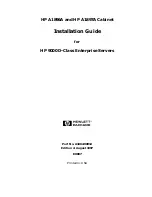
Page 18 of 20.
© 2019 CommScope, Inc.
TC-96272-IP
5.7
Loading Splice Trays
The Flex Frame Splice Cabinet uses the FOST-ACC-D-TRAY-RR-288-KIT splice tray. Each
splice tray accommodates four splice chips, each with six mass fusion splices, for a capacity of
24 splices or 288 fibers per tray.
Panel stubs (or equivalent cables from non-Flex-Frame panels) come in from the left side of the
splice cabinet. Each panel stub goes to one splice tray. Facility cable sub-units come in from the
top of the splice cabinet. Each sub-unit (of 288 fibers maximum) goes to one splice tray.
Use the following procedure.
1.
Once the number of facility cables to be brought into the cabinet is known, designate
cable positions from right to left in the cable entry area.
2.
Unstrap the lowest splice tray in the bottom deck and remove it to a nearby flat working
surface.
3.
Route the first panel stub (coming through the lowest entry portal) to the splice tray and
tie it down at the tie down point shown in
4.
Wind the panel stub ribbons twice counterclockwise around the splice tray as shown.
5.
Route the first sub-unit of the rightmost facility cable to the splice tray and tie it down at
the tie down point shown in
.
6.
Wind the sub-unit ribbons twice clockwise around the splice tray as shown.
7.
Return the splice tray to the splice deck.
8.
Lift up the panel stub slack and hang it over the radius limiter just to the left of the top of
the splice deck.
9.
Lift up the facility cable sub-unit slack and hang it over the cable management feature
just to the right of the top of the splice deck, forming a J pattern.
10.
Place slack loops into cable routing clips on top and side of cabinet.
11.
Continue to the second splice tray to do the same steps described above and then
continue on upward to the remaining splice trays.
12.
When completed with the lower splice deck, repeat the same steps for the upper splice
deck using the analogous features in the top half of the cabinet.
Note:
This procedure assumes that all splice trays are being loaded at the same time and are
being loaded from bottom to top within the cabinet. This is the most common but not the
only arrangement. If required, splice trays can be individually loaded. Any arrangement
is possible that results in an orderly routing of cables within the cabinet.
Note:
Cables routed to the upper and lower splice decks should be separate from each other.



































